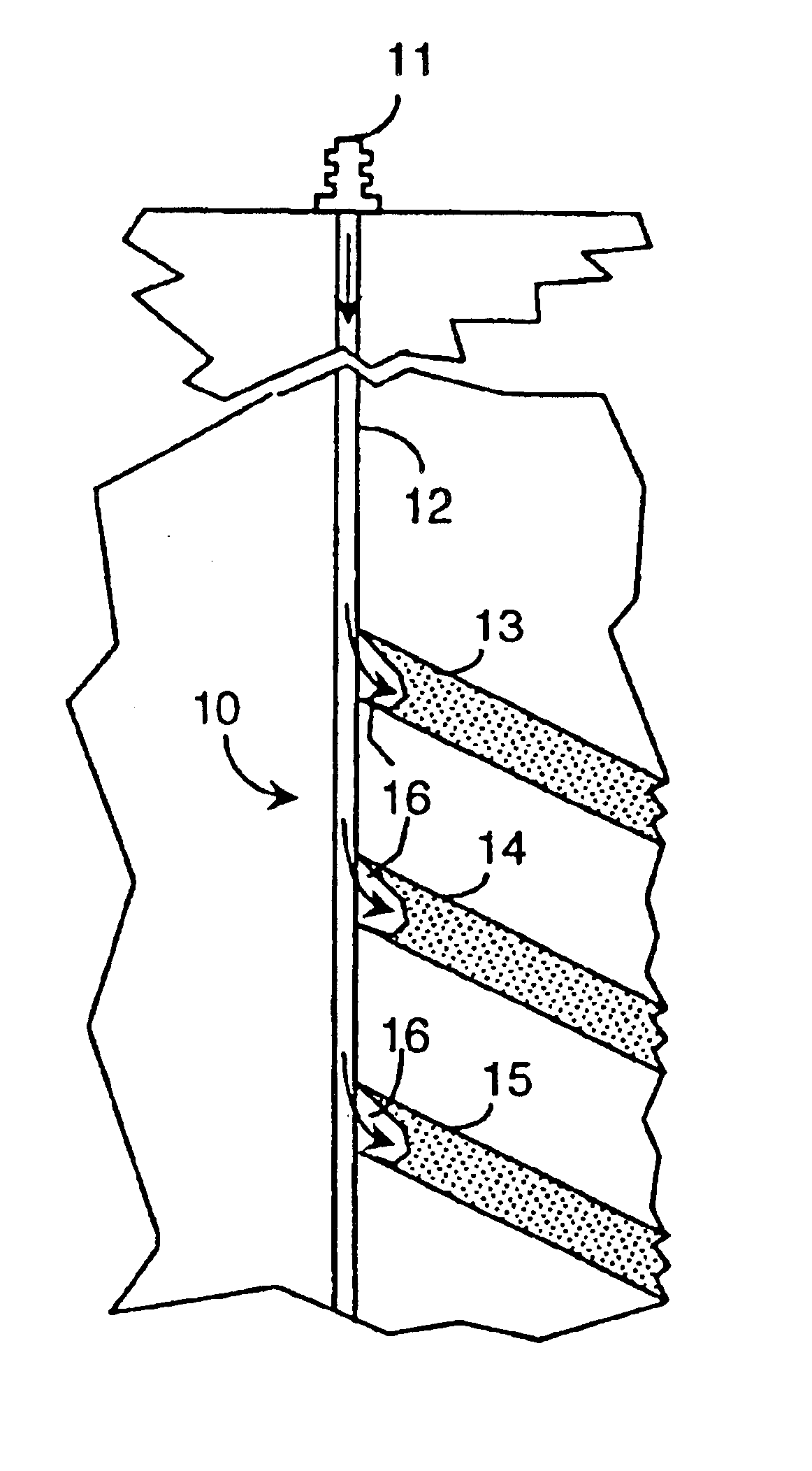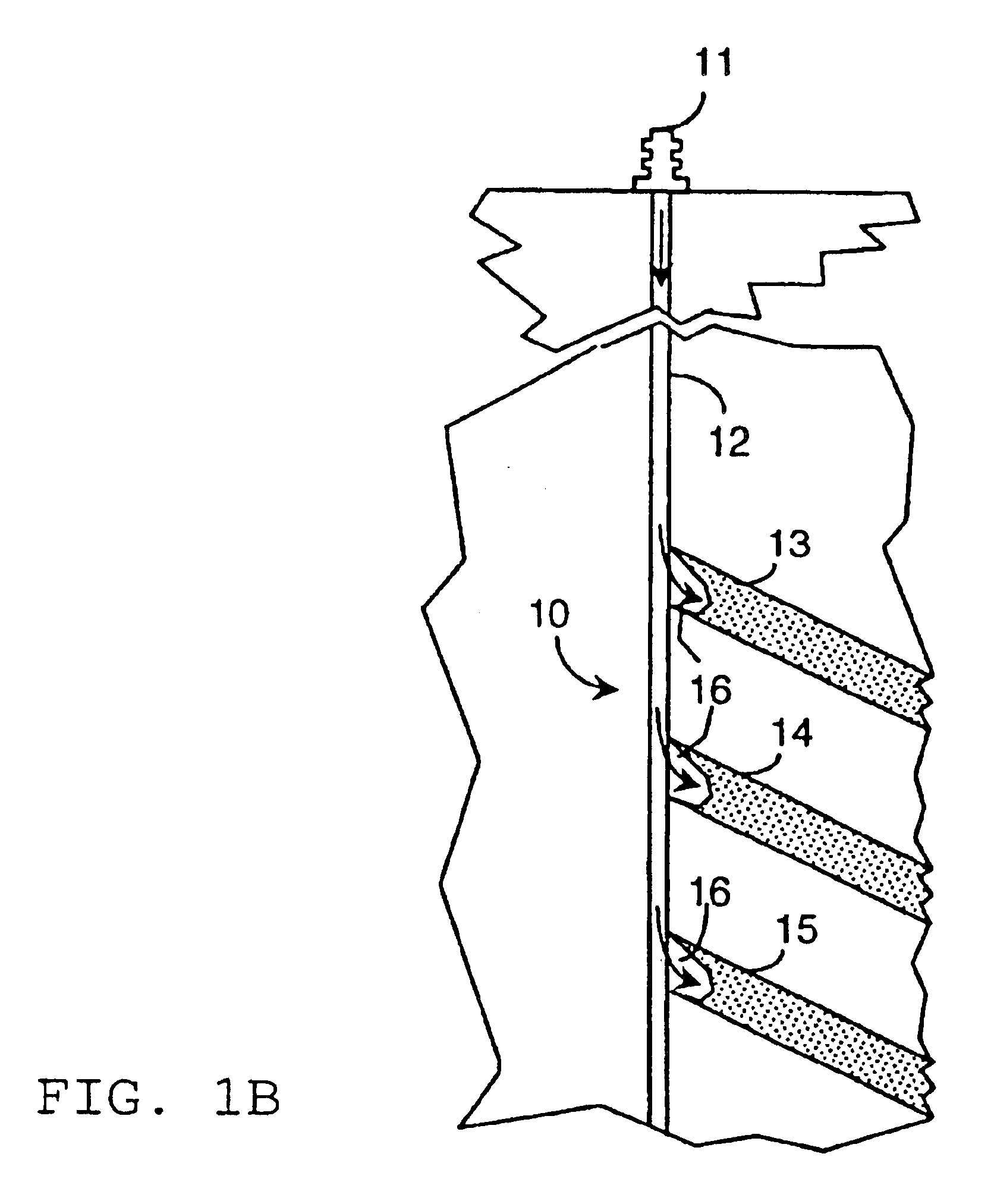Method for water control
a technology of water control and water supply, applied in the field of water control, can solve the problems of increasing the amount of water produced from the well, affecting the quality of water supply, and requiring remedial measures to reduce the water/hydrocarbon production ratio, and achieve the effect of low viscosity of the composition
- Summary
- Abstract
- Description
- Claims
- Application Information
AI Technical Summary
Benefits of technology
Problems solved by technology
Method used
Image
Examples
Embodiment Construction
[0031]The process is described in more detail for the case of water entry through one or more zones in a multi-layered completion where the remaining layers are producing water-free oil as illustrated in FIG. 1.
[0032]The first schematic drawing (FIG. 1A) shows a producing well 10 including wellhead 11 and wellbore 12. It is assumed that three permeable layers 13, 14, 15 have been completed with a water breakthrough in layer 14. The treatment fluid 16 is pumped from surface without mechanical isolation (packers) and invades all open zones (FIG. 1B). The treatment fluid provides a reversible, oil-sensitive structure in each layer. Such structures can be formed using compositions consisting of surfactants or hydrophobically modified polymers or mixtures thereof in combination with an agent controlling the association of the species in solution as are described in more detail below.
[0033]The well is then returned to production. The gel structure is broken by contact with oil and the tre...
PUM
| Property | Measurement | Unit |
|---|---|---|
| time | aaaaa | aaaaa |
| time | aaaaa | aaaaa |
| time | aaaaa | aaaaa |
Abstract
Description
Claims
Application Information
 Login to View More
Login to View More - R&D
- Intellectual Property
- Life Sciences
- Materials
- Tech Scout
- Unparalleled Data Quality
- Higher Quality Content
- 60% Fewer Hallucinations
Browse by: Latest US Patents, China's latest patents, Technical Efficacy Thesaurus, Application Domain, Technology Topic, Popular Technical Reports.
© 2025 PatSnap. All rights reserved.Legal|Privacy policy|Modern Slavery Act Transparency Statement|Sitemap|About US| Contact US: help@patsnap.com



